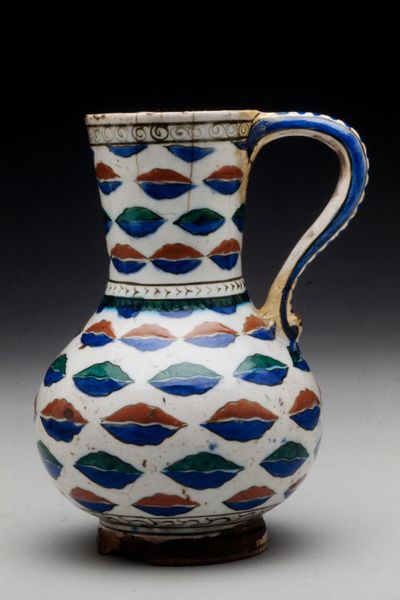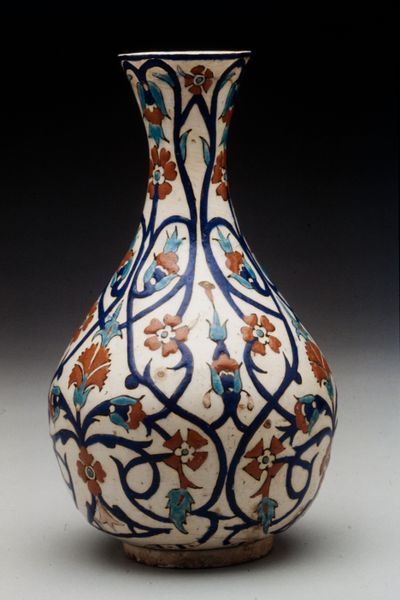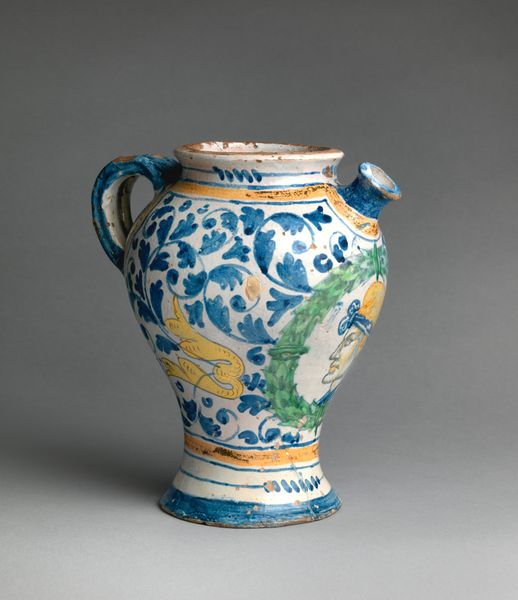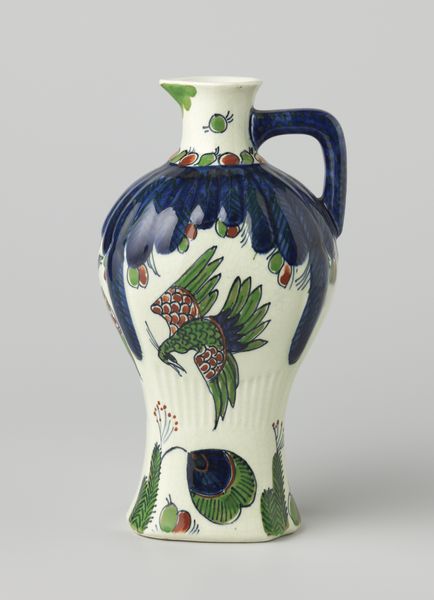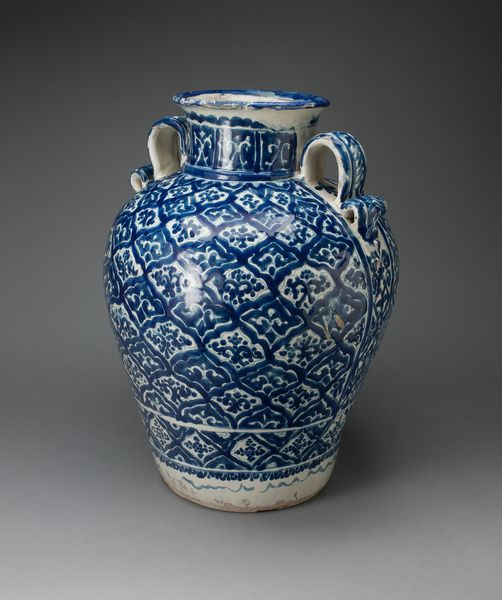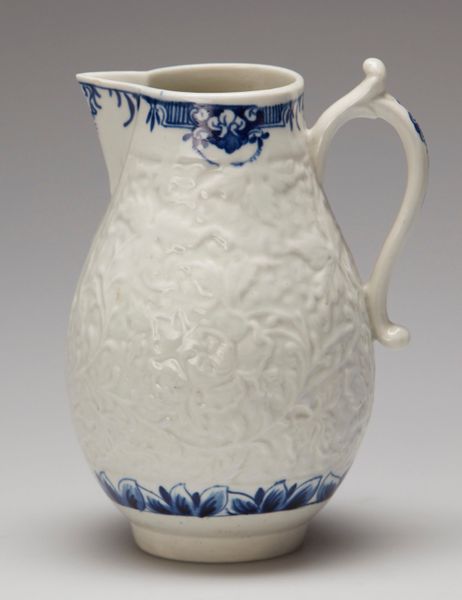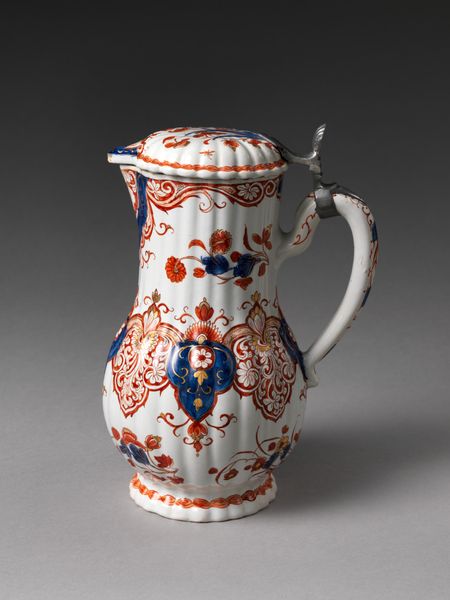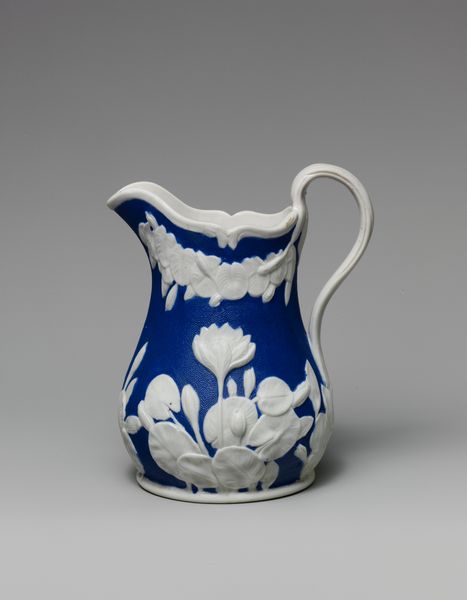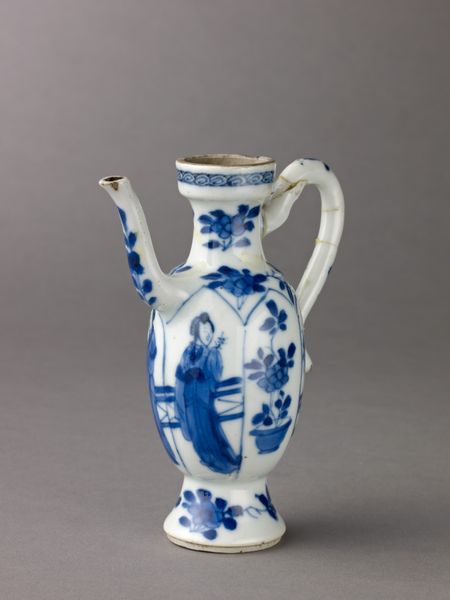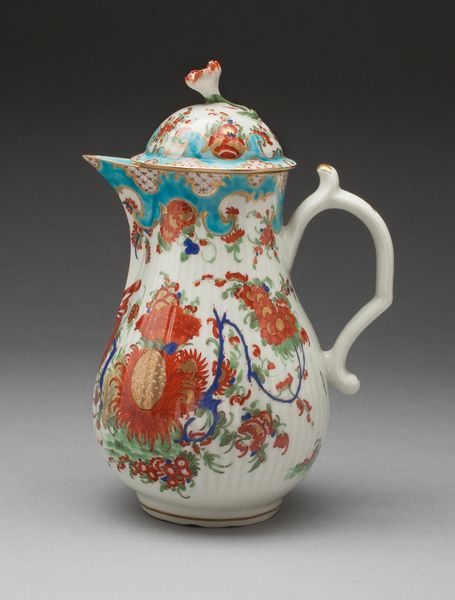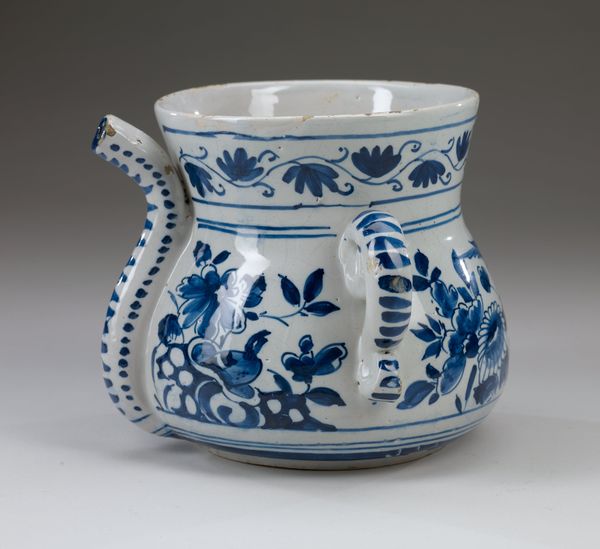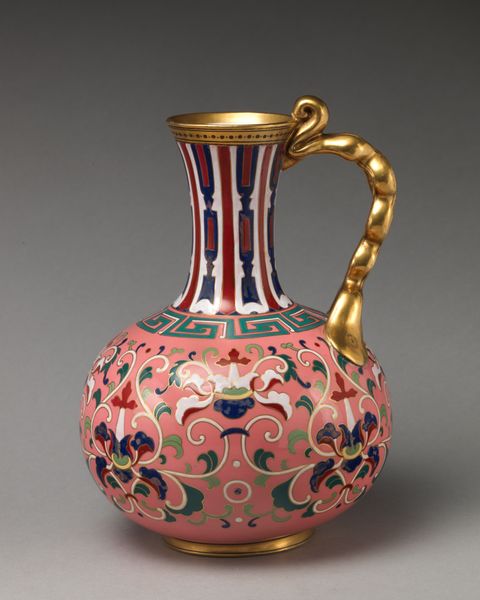
ceramic, earthenware
#
ceramic
#
earthenware
#
ceramic
#
islamic-art
#
decorative-art
Copyright: Public Domain
This striking pitcher, of unknown origin, features a vibrant array of floral motifs painted onto its ceramic surface. Dominating the imagery are tulips, carnations, and hyacinths, symbols deeply embedded in Ottoman culture. The tulip, in particular, holds a potent symbolism. Its stylized form is not merely decorative; it is a representation of divine beauty and earthly perfection. In Ottoman poetry and art, the tulip is often associated with the Sultan and the ruling class, embodying power, prestige, and the ephemeral nature of life. This echoes the fleur-de-lis, once a stylized lily used by French royalty, that also conveyed divine authority and sovereign power. Motifs like these speak to our collective memory, triggering subconscious associations that resonate across cultures and epochs. The tulip motif, recurring throughout history, reveals the non-linear, cyclical journey of symbols, resurfacing in various contexts, evolving, and accruing new layers of meaning over time.
Comments
No comments
Be the first to comment and join the conversation on the ultimate creative platform.
